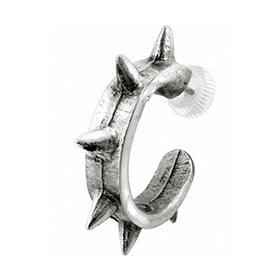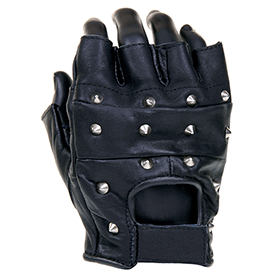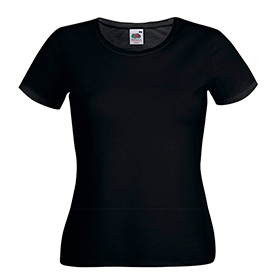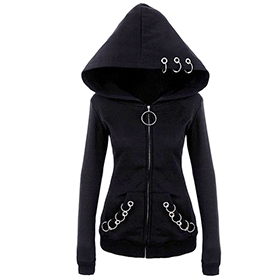Materiais Guide
Cotton:
Cotton is a white or off-white fiber obtained from the fruits of some species of the genus Gossypium, family Malvaceae. There are many native species from the tropical areas of Africa, Asia and America, and since the end of the last Ice Age fabrics were already made with cotton. Currently, only 4 species are used in large scale for the manufacture of medical fabrics and instruments.
Approximate chemical composition of the cotton fiber, determined in dry vase:
Cellulose ............................. 94.0%
Proteins ............................. 1,3%
Ashes ................................. 1,2%
Pectic substances ................ 0,9%
Malic acids, citric, etc .......... 0.8%
Wax .................................... 0.6%
Total Sugars ....................... 0,3%
Non-dosed ......................... 0,9%
TOTAL ............................... 100%
Polyamide:
Polyamide is a thermoplastic polymer composed of amide monomers connected by peptide bonds and may contain other groups. The first polyamide was synthesized at DuPont by a chemist named Wallace Hume Carothers in 1935. [1] Polyamides like nylon, aramids, began to be used as synthetic fibers, and then passed to the traditional plastics manufacture.
Currently, polyamide has a close relationship with a family of polymers called polyamide, and its production is made from four basic elements, extracted respectively: petroleum (or natural gas), benzene, air and water (carbon, nitrogen , oxygen and hydrogen). [citation needed]
These elements are combined by special chemical processes, giving rise to compounds known as adipic acid, hexamethylenediamine, caprolactam and other compounds, which in turn undergo chemical reactions, so as to constitute the macromolecules that form the polyamide.
Polyester:
The synthetic fibers of polyester are made in continuous filament, for the production of smooth fabrics, as in cut filaments, which is made to make fabrics of the most varied aspects, such as wool, silk, cotton, etc. The polyester is very resistant and incorruptible, it does not get dirty, it is easy to wash, it dries quickly and it conserves the pleated and the even starched damp. The fabrics are made of ropes, camping tents, pleated skirts, ties, sweaters and fabrics for decoration.
Elastane:
Elastane is a synthetic filament known for its exceptional elasticity. It is lycra essentially pure, without addition of polyamide, and which is denominated of Lycra commercial or Industrial. It is stronger and more durable than rubber, its main competitor. It was invented in 1959 by Joseph Shivers of DuPont. When it was put on the market, it revolutionized many areas of the garment industry. It is also known as spandex (in the USA and Australia).
Fiber Features:
- Stretching of more than 500%
- Able to recover the original length even after repeated cycles of stretching and retraction;
- Light (same retraction force with lower head than rubber);
- Greater resistance to chemicals than rubber
- Has low resistance and loses properties when in contact with oily products.
- It loses resistance at high temperature.
Silk:
Silk is a protein fiber used in the textile industry. It is obtained from the cocoons of the silkworm.
Natural silk fiber is a continuous filament of protein, produced by caterpillars of certain types of moths, being one of the most expensive raw materials. The caterpillars expel through the glands the fluid of the silk (fibroin) surrounded by a gum (sericin), which solidifies immediately when in contact with the air.
Silk is used to produce soft, shiny and soft fabrics. The fabrics are used in shirts, dresses, sweaters, ties, shawls, gloves etc. The silk has a scintillating appearance, due to the triangular, fiberglass-like structure of the fiber that refracts light.
Whool:
The wool is derived from the sheep's hair which, after being sheared, is processed industrially for textile uses, cleaning and coloring.
The fabric made of wool serves as a thermal insulation, does not heat so much under the sun (it keeps the body temperature on average 5-8 degrees lower compared to synthetic fabrics exposed to the sun), "breathes" in the body, is naturally elastic, therefore more comfortable and does not knead.
Canvas:
Canvas is a heavy-duty fabric used in the manufacture of candles, tents, awnings, backpacks and other products where resistance is required. It is also popularly used as a painting surface and used in the making of bags.
The modern canvas is usually made of cotton. It differs from other heavy cotton fabrics like twill, by the way it is woven. The canvas has a very simple weave: the framing thread simply passes over one warp yarn and under the next one (the twill yarn for the twill passes over one and under two and each yarn of the framing moves the pattern one yarn up; the result is a diagonal pattern that can be seen in the fabric used for "jeans"). The canvas comes in two basic types: common and thick. The strands on the thick canvas are woven more together. In the United States, canvas is classified in two ways: by weight (ounces per square yard) and by number. Numbers work in the opposite direction to weight; in this way, a canvas 10 is lighter than a canvas 4.
Suede:
Suede is a type of shaggy leather made with the underside of the skin of goats, cows, pigs, calves, deer and especially lambs. The outer skin layer of the animal is excluded (thicker), and therefore less durable (but softer) than ordinary leather.
The softness, lightness and flexibility of the material make it suitable for use in clothing and other applications that require delicate materials such as gloves. It is also popular in upholstery, footwear, handbags, and as lining for leather goods.
Felt:
Felt is a paper made of wool or animal hair, whose fibers are aggregated by calendering. Among the hairs most used are hare, rabbit, sheep, camel and beaver.
It is TNT (non-woven fabric), because the calender does not weave, only compacts.
It is used in the manufacture of hats, coats, in addition to the coating of steam boilers and other industrial equipment.
Felt is also widely used in craftwork. On flags and patrol tapes.
Velvet:
Felt is a paper made of wool or animal hair, whose fibers are aggregated by calendering. Among the hairs most used are hare, rabbit, sheep, camel and beaver.
It is TNT (non-woven fabric), because the calender does not weave, only compacts.
It is used in the manufacture of hats, coats, in addition to the coating of steam boilers and other industrial equipment.
Felt is also widely used in craftwork. On flags and patrol tapes.
Satin:
Satin is a fabric and was so named after Zaitum (or Tsenthung), China, where it originates. It was at first a bright silk fabric in tightly woven fabric.
It is also name of ligament of calla tissues that by the distribution of its taken points makes it bright having different averse and right. Being that for benefit of the most striking feature the most brilliant is the right Obey as a rule (Turkish Shallow and Shallow of the Kingdom) constant displacement in a previously calculated square matrix.
In the twentieth century, rayon and other synthetic fibers took the place of silk.
Luxurious fabric, satin is most often used for evening wear and is highly recommended by tailors for its class and trim.
Twill:
Sarja is a woven of wool, cotton or mixed, with twill ligament, presenting grooves in the diagonal direction. Although this term is used to designate the above fabrics, it is more appropriate when referring to the type of weave / weave used in various fabrics known as twill weave.
Taffeta:
Taffeta is a woven silk fabric. It has its origin in the old Persia, being great producer at the present time China, in the region of Jiangsu. Taffeta is a fine, satin fabric made of silk, wool or synthetics. It has good strength and durability. It is resistant to abrasion and chemicals, easily accepts dyes and is easily washed. It is similar to satin, but shifts less. Its stiffness depends on the way it is woven.
The word 'taffeta' is a derivation of the Persian word 'Taftah'. Taffeta originated in Persia (Iran) in the 16th century. After some time it was made of silk or linen. It used to be a luxury fabric worn by wealthy women, but today it can be worn by any person.
Clothes made with Taffeta are very used in festive occasions, for being a very fine fabric.
CHARACTERISTICS OF TAFFETH:
- It is durable - It is durable. - It is audacious - It is resistant to chemical and abrasion. - It makes a noise when rubbed.
TAFFET USES:
Taffeta is used in suits, coats, ribbons, sweaters, dresses, umbrellas, lining for coats and handbags. It is also used in pillows, bedspreads and blankets.
Net:
The lace is a transparent fabric with an open, fine and delicate fabric, which forms varied designs with threads of linen, silk, cotton [1] or even gold.
It is sometimes applied as a garment of dresses, implements and vestments.
Most rents are composed of two elements:
The design or motif;
The background, which keeps the drawing together.
There are two main types of income: the income of bobbin and the income of needle. Other types include crochet (executed with a needle) and frivolité, prepared with naveta, a kind of shuttle, that forms us with the lines.
Vinyl / PVC:
Polyvinyl polyvinyl chloride (also known as vinyl chloride or polyvinyl chloride, IUPAC name polychloroethene), better known by the acronym PVC (Polyvinyl chloride) is a non-100% plastic originating in petroleum.
PVC contains by weight 57% chlorine (derived from sodium chloride - cooking salt) and 43% ethylene (derived from petroleum). Like all plastics, vinyl is made from repeated polymerization processes that convert hydrocarbons, contained in materials such as petroleum, into a single compound called polymer. Vinyl is basically formed by ethylene and chlorine.
This gives vinyl two advantages, that of not being so susceptible to the price changes in the oil market and of not being a good fuel as the petroleum derivatives.
By a chemical reaction, ethylene and chlorine combine to form ethylene dichloride, which in turn is converted into a gas called "VCM" (Vinyl chloride monomer). The final step is polymerization, which converts the monomer to a vinyl polymer, which is PVC, or simply vinyl.
Leather:
Leather is the tanned leather of animals, used as a noble material for making various artifacts for human use, such as shoes, belts, wallets, purses, bags, briefcases, coats, hats, among others.
In recent years, as a high-cost material, fashion trend and other requirements of modern life, the market for various materials, synthetic and natural, has grown considerably. The reconstituted leather ("recouro"), a mixture of leather trimmings, resins and other products, also reached a great projection in the market.
In any case, leather has not lost its position as a noble material, being required for the manufacture of upholstery (furniture and automotive), footwear, clothing and accessories (bags, belts, wallets, suitcases, folders) worldwide.
The bovine leather is the most used, due to being the most abundant of the market and the lowest price. The second most commonly used is goat leather, due also to the ease of obtaining, which makes prices competitive, and mainly for its quality, which is greater than that of cowhide. However, the demand for pork, sheep and other animal species such as alligator, snake and piglets, more recently, frog and fish has also increased.
Viscose:
Viscose is an artificial cellulose fiber, made from wood chips from softwood trees or from cotton seed linters. A cellulosic pulp is formed which by extrusion in spinnerets and with the contact of other solutions fiber is made. In 1905, Courtauld's began producing viscose rayon. Viscose is used in knitwear, dresses, coats, blouses and suits. Also known as Javanese Silk (mixed with acetate).
Characteristics:
- Textile Symbol: CV;
- regularity: fineness and length more regular than natural fibers;
- Brightness: as desired;
- Dyeability: most of the dyes used in cotton, less sulfur can be used;
- Washability: they do not need very long washes;
- Elasticity: it is higher than the natural fibers, but it is inferior when compared to the cotton and silk;
- Hygroscopicity: very high; during absorption the fibers swell, causing shortening;
- Resilience: It is low by crumbling easily, however they are easy to pass according to the book (Anell book fibers, yarns and fabrics association of laundries);
- Low cost;
- Similar to cotton, but has better touch, trim, more intense color, better texture;
- Low resistance to ultraviolet light (yellow easily).
Raffia:
Raffia is the name given to the fibers of palm trees of the genus Raphia, commonly used for the manufacture of bags for fruit transport or small loads.
There is also a synthetic polypropylene compound which mimics raffia fiber and is also so-called.
Linen:
Flax is a herbaceous plant that reaches up to one meter in height and belongs to the family of lináceas. It comprises a number of subspecies, composed of botanists named Linum usitatissimum L. It is basically composed of a fibrous substance from which long fibers are extracted for the manufacture of tissues and a woody substance. It produces oleaginous seeds and its flour is used for potato poultices, used for medicinal purposes.
Hemp:
Hemp or industrial hemp is the name given to the varieties of the Cannabis plant and the name of the fiber obtained from them, which has, among others, textile uses. In addition to clothing, it is used in papermaking and animal fodder.
Acetate:
Acetate or ethanoate is an anion of an organic salt or acetic acid ester. In organic chemistry, the "acetate ion" has the formula CH 3 COO- and is the conjugate base of acetic acid.
Nylon:
Nylon is a generic name for the family of polyamides, synthesized by the chemist named Wallace Hume Carothers in 1935. [1] It was the first synthetic textile fiber produced. The velcro and fabrics used in women's socks, underwear, swimsuits, bikinis, shorts, shorts and other sportswear are made from the polymer.
 English
English  Português
Português 






























































